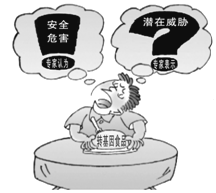问题
选择题
为预防猪流感传染给人,2009年11月16日,我市甲型H1N1流感疫苗接种工作正式启动.你认为疫苗和预防接种分别属于( )
A.抗原,非特异性免疫
B.抗原,特异性免疫
C.抗体,非特异性免疫
D.抗体,特异性免疫
答案
由分析可知给同学们大多接种了甲型H1N1流感疫苗是由病原体制成的,只不过经过处理之后,其毒性减少或失去了活性,但依然是病原体,进入人体后不会使人得病,但能刺激免疫细胞产生相应的抗体,则这种疫苗相当于抗原;其产生的抗体只对甲型H1N1流感病毒起作用,对其它病原体无效,因此属于特异性免疫.
故选B.

